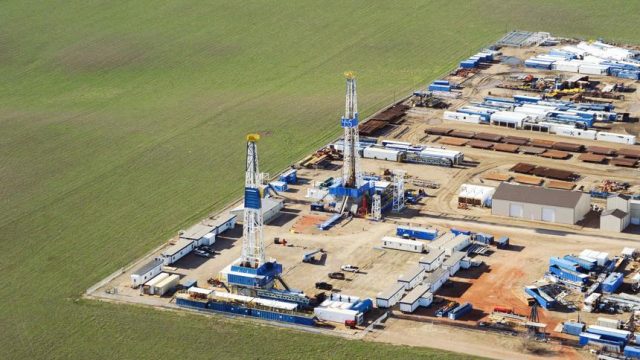Reform to North Dakota’s Oil Spill Guidelines Is Imperfect but an Improvement Over the Status Quo

Stacked rigs and other idle oil equipment is seen in a Nabors Drilling yard near Williston, North Dakota April 30, 2016. REUTERS/Andrew Cullen/File Photo
The problem with a lot of the reporting on oil spills in North Dakota is that it tends to lump all spills of all sizes together into one uniform number. As if all spills were created equal.
But that’s just not the case. Most spills are very small. Most spills are entirely contained and have zero environmental impact. Reporting all spills together makes for a larger number, to be sure, which fits the narrative of certain journalists and politicos who are hostile to oil development. But that big number isn’t necessarily an accurate reflection of the actual environmental impact of these spills.
Which is why state lawmakers are taking a stab this session at fixing that problem. A fix which passed the state Senate yesterday.
HB1151, introduced by Rep. Roscoe Streyle (R-Minot), prohibits reporting of a spill to state regulators, “if the leak, spill, or release is crude oil, produced water, or natural gas liquids in a quantity of less than ten barrels cumulative over a fifteen-day time period, remains on the site or facility, and is on a well site where the well was spud after September 1, 2000, or on a facility, other than a well site, constructed after September 1, 2000.”
[mks_pullquote align=”right” width=”300″ size=”24″ bg_color=”#ffffff” txt_color=”#000000″]Most spills are very small. Most spills are entirely contained and have zero environmental impact.[/mks_pullquote]
That last bit is about ensuring that the spill site in question was built to be impermeable in accordance with a state regulation which went into effect on that date.
The bill passed 82-11 in the House, and 31-14 in the Senate, and while it was amended in the latter chamber the change was trivial so the next step for the bill is Governor Doug Burgum’s signature or veto.
But the legislation has critics. “It really feels like it’s going the wrong way and setting the wrong tone for the legacy of the Bakken play,” Troy Coons, chairman of the Northwest Landowners Association, told my colleague Amy Dalrymple.
“We used to have the assurance that every spill over 1 barrel would be reported and the state would be watching what happens on a location to keep the oil companies in compliance on cleanups,” Patty Jensen, a landowner near Tioga who was the victim of a significant pipeline leak, said. “We will no longer will have that assurance.”
These are fair criticisms.
While I understand and support the motivations of the legislation, I think it could be improved.
Back in January I wrote that the solution to the problem of inflated spill numbers giving in an inaccurate impression of environmental impacts could be solved through the use of statistical categories. Instead of zero reporting for small, contained spills with zero environmental impact, why not move those spills into a different category?
Why not report spills that are contained one way, and spills that are not contained another way? That way we can differentiate and focus our concern on the latter spills, where environmental protections failed of were overwhelmed, as opposed to the former where those safeguards worked as intended.
I hope that Governor Burgum signs this legislation as is – even with its weaknesses it is an improvement over the status quo – though he may not.
He makes much of his desire for clean data from which to make public policy, and I suspect he will be skeptical of legislation that will reduce the amount of data reported about oil spills.
If Burgum does sign it, I hope that lawmakers revisit the issue in the future.




